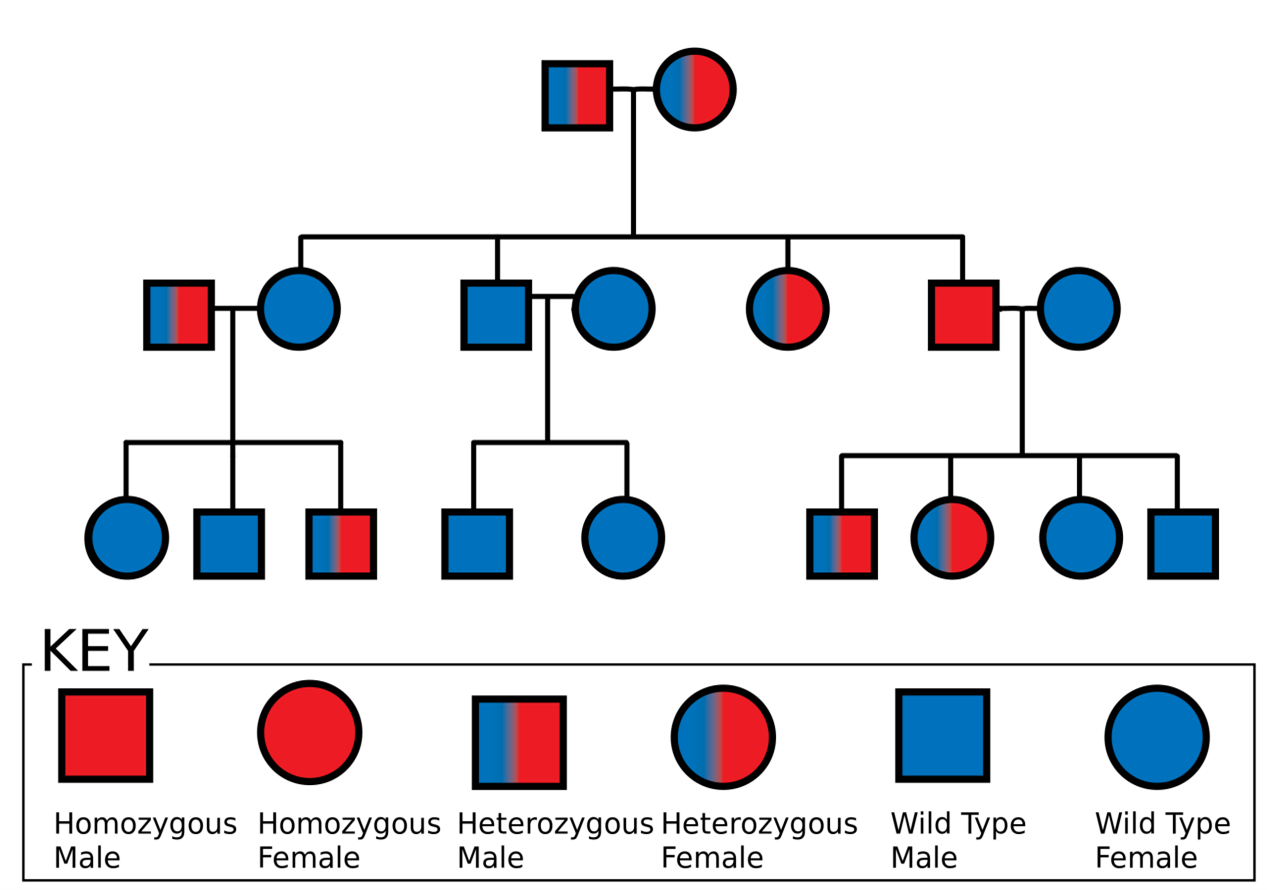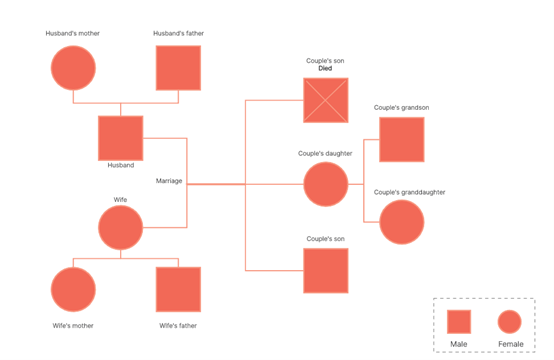In the world of genealogy and genetics, a unique tool has surfaced, enabling researchers, breeders, families, and health professionals to traverse through generations and unravel a myriad of genetic possibilities. This tool, known as a pedigree chart, presents a vast realm of information on familial relations and genetic traits in a consolidated, visually appealing format.
Through this article, we explore the fundamental aspects of a pedigree chart, its diverse usage across fields, and the manifold benefits that it offers. Besides, you can also learn how to make a pedigree chart by yourself. Keep reading.
What Is a Pedigree Chart
At its core, a pedigree chart is a graphical representation that chronicles the genetic lineage of an individual or organism. Essentially a family pedigree chart, it is an orderly method to delineate the genetic backdrop of a family line spanning several generations. Its usage allows for clear visualization and understanding of genetic relationships and attributes within a family tree.

Image source from Wikipedia
The structure of a pedigree chart, though simple, is immensely insightful. It encompasses various shapes and lines, each carrying unique significance. Every symbol or shape stands for an individual in the family line, with squares typically symbolizing males and circles indicating females. The connective horizontal and vertical lines manifest relationships and sequential generations.
When to Use a Pedigree Chart
Pedigree charts hold immense value not just in genealogy research, but also across varied fields like healthcare, animal breeding, and biological studies.
In healthcare contexts, pedigree charts find wide usage in tracing inherited genetic disorders or attributes. The mapping of a family's genetic history via a pedigree chart enables healthcare experts to predict future generational risks for certain diseases.
Animal breeders leverage pedigree charts in selective breeding agendas to retain favorable traits and ward off genetic disorders. Through pedigree charts, breeders can identify hereditary patterns ensuring healthy prospective generations.
In biological studies, notably genetics, pedigree charts find extensive usage to track the inheritance patterns of specific traits or genes through multiple generations. This tool proves vital for scientists studying genetic phenomena like Mendelian inheritance.
Benefits of Using a Pedigree Chart
Utilizing a pedigree chart reaps multiple benefits - from demystifying familial connections to foreseeing potential health risks.
- Trace Ancestry and Heritage: A pedigree chart empowers users to visually map their ancestry, tracing lineage back through several generations. This uncovers not just their familial history but also aids in understanding their cultural lineage.
- Uncover Genetic Disorders: A pedigree chart can graphically depict patterns of genetic disorders enabling healthcare experts and patients to identify possible health risks and devise relevant preventive care plans.
- Track Hereditary Traits: The diagram aids in the identification and tracking of hereditary traits which allows breeders or researchers to make informed decisions.
- Ease of Use: The graphical nature of a pedigree chart renders it relatively easy to comprehend, offering an easy-to-follow visual guide for intricate family histories or genetic patterns.
Whether one seeks understanding of their family history or investigative tools for genetic phenomena, a pedigree chart serves as an extremely detailed, comprehensive, and efficient instrument. Its versatility across various fields underscores its importance as a pivotal tool for genetic research and familial understanding.
How to Create a Pedigree Chart
Creating a family pedigree chart might seem challenging, but with a logical approach and right resources, it becomes a manageable task. Below are the step-by-step instructions for creating a comprehensive pedigree chart:
- Identify Your Starting Point: Begin by identifying the person or organism that will be the focal point of your pedigree chart, known as the proband. In case of human families, it could be you or another family member.
- Collect Information: Next, collect as much information as possible about your family. This includes names, birth and death dates, medical histories, and any known genetic disorders. The more information you can gather, the more complete and helpful your pedigree chart will be.
- Chart the Symbols: Start to fill in your pedigree chart with symbols. Use circles for females and squares for males. Draw horizontal lines between couples and vertical lines down to their children. In case of multiple children, they are connected by a horizontal sibship line and are usually listed in birth order from left to right.
- Fill in the Details: Next to each symbol, write the person’s name, and below it write their date of birth and date of death (if applicable). If known genetic disorders or diseases run in the family, indicate these with shading or specific symbols inside the individual's circle or square.
- Check Your Work: Once you've filled out your chart, double-check your information for accuracy. If you're not sure about certain facts, do your best to find out by speaking to family members or doing additional research.
Remember that creating a pedigree chart is an ongoing process. As your family grows and changes, you can update your chart with new information.
Create a Pedigree Chart in Minutes with Boardmix
In our technology-driven age, several software tools can simplify the task of creating a pedigree chart. One such effective tool is Boardmix. With its user-friendly interface and versatile diagramming features, Boardmix sets it apart from other Pedigree diagram makers and enables anyone to create a detailed pedigree chart in minutes.

To create a pedigree chart using Boardmix, follow these steps:
- Create an Account: Begin by creating an account on Boardmix. Once your account is set up, log in to access all its features.

- Create a New Board: On the dashboard, select the option 'New board.' This opens up a blank canvas where you can create your pedigree chart.

- Add Members: Choose a shape to start from scratch or use a template you like, then you can start adding individuals to your pedigree chart. Input their details like name, gender, birth date, and other relevant information.
- Establish Relationships: Once all family members are added, establish relationships between them using the 'Connection line' feature. You can define relationships like parent-child or husband-wife easily.
- Annotate: With Boardmix, you can also annotate each individual with relevant medical or genetic information. This is especially useful for tracking genetic disorders or traits.

- Save and Share: Once complete, save your pedigree chart. Boardmix also allows you to share your pedigree chart with others directly via a link or by exporting it as an image or PDF file.

Creating a pedigree chart has never been easier with the digital tools available today. They not only simplify the process but also allow you to store, update, and share your pedigree chart effortlessly.













